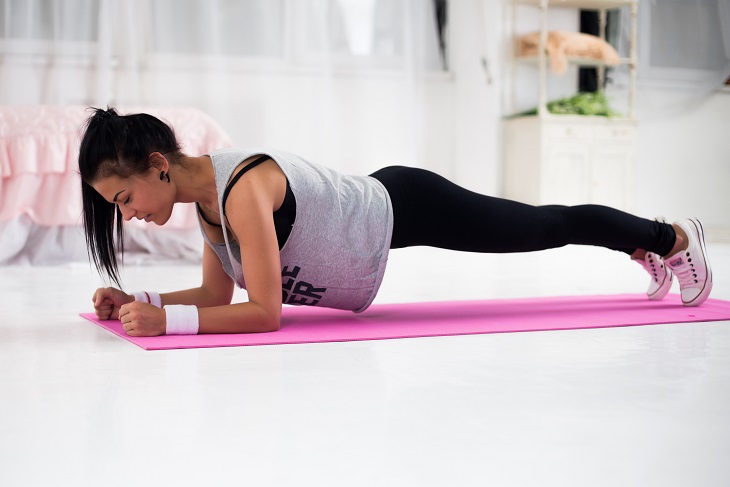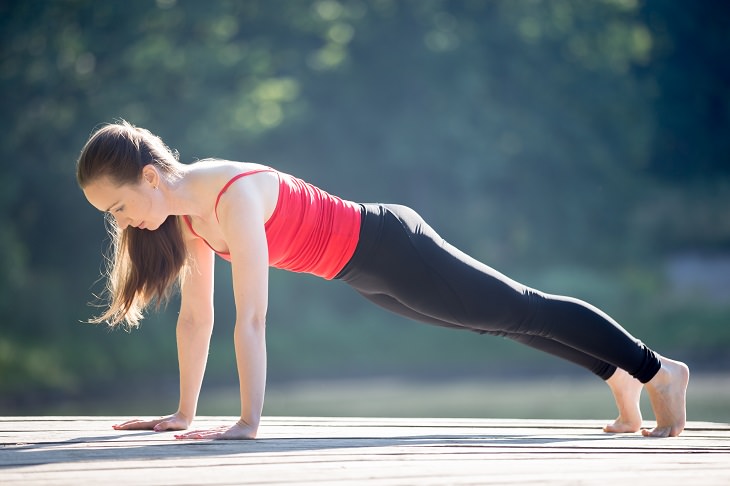7 Health Benefits of Planking
If there's one form of exercise you should
practice each day, planking is it. In fact, they are one of the most
effective exercises you can do, primarily because they require little
time and achieve substantial results if practiced regularly. So what
exactly will happen when you start doing planks every day?


1. You'll improve core definition and
performance
Planks engage all major core muscle groups including the transverse
abdominus, the rectus abdominus, the external oblique muscle and the
glutes. In strengthening each of these muscle groups you will notice the
following:
• An increased ability to lift heavier weights.
• Improved sports performance, particularly in relation to jumping.
• Improved capacity for stable side-bending and waist-twisting.
• A supported back and strong, shapely buttocks.
2. A decreased risk of injury in the back
and spinal column
Besides enabling you to build muscle, planks ensure that you are not
putting too much pressure on your spine or hips. The American Council on
Exercise states that doing planks regularly will significantly reduce
back pain and will strengthen your muscles ensuring a strong support for
your entire back, especially in the areas around your upper back.
3. An increased boost in your overall metabolism
Planking will challenge your entire body. As a result, when practiced
daily, planks will burn more calories than other traditional abdominal
exercises, such as crunches or sit-ups. The muscles you strengthen in
this exercise will enable you to burn more energy, even if you've spent
most of your day sitting down. Practicing plank for 1 minute repeatedly
throughout the day (up to 10 times), will provide an enhanced metabolic
rate and will ensure that your metabolic rate remains high throughout
the day.
4. Posture is significantly improved
Doing planks regularly will improve your ability to stand with a
straight and stable posture. Through strengthening your core, you will
be able to maintain proper posture at all times, because muscles in the
abdomen have a profound effect on the overall condition of your neck,
shoulders, chest, and back.

5. Improve overall balance
If you've ever tried to balance on one leg and were unable to do so for
more than a couple of seconds, one likely reason why is because your
abdominal muscles were not strong enough to give you the balance you
needed. Doing planks will give your balance the boost it needs.
6. Improved flexibility
Planks expand and stretch all your posterior muscle groups, your
shoulders, shoulder blades, and collarbone, while also stretching your
hamstrings, arches of your feet and toes. Add a side plank to the mix
enabling you to work on your oblique muscles.
7. Provides mental health benefits
Planks have a particular effect on our nerves, making them an excellent
way to boost your mood. They do so by stretching out the muscle groups
that contribute to stress and tension in the body. If you spend most of
your day sitting down, your thigh muscles get tight, your legs get heavy
after being bent for several hours and tension develops in your
shoulders after slumping all day. Maintaining such a posture for the
most part of your days will, therefore, put too much stress on the
muscles and nerves. Planks will help calm your brain, treating anxiety
as well as symptoms of depression.
Alignment Cues for a Better Plank:
1. Start on all fours. Set up your hands, ensuring that they are
shoulder-distance apart. The wrists should be directly under the
shoulders. Spread your fingers wide and distribute the weight evenly
through the whole surface of your hand
2. Keep your arms straight, actively pressing the mat away from you and
draw the tricep muscles towards each other. As you do so, you will feel
the upper back and upper arms engaged and active. Draw your shoulder
blades down your spine, with your shoulders away from your ears, this
creates space in your neck. Keep your chest open
3. Keep your legs strong. Allowing your legs to relax in planks, will
cause your lower back to sag - a movement you really want to prevent. So
switch on your leg muscles, pressing the tops of the thighs up,
lengthening the tailbone towards the heels
4. Draw the crown of the head forward while lengthening the tail and
heels back, creating a strong line of energy from your head, down to
your toes.
5. Keep your breath smooth and steady.